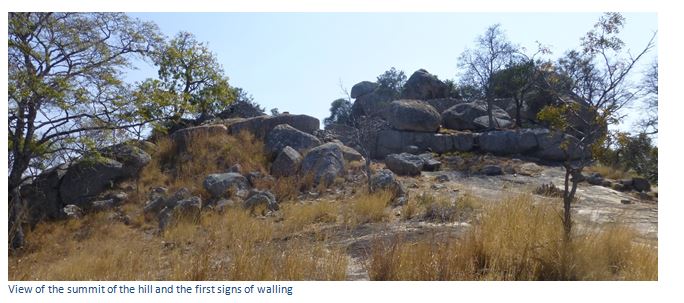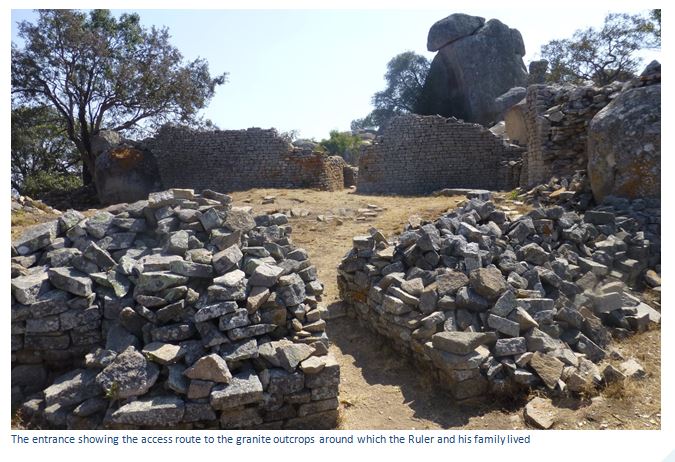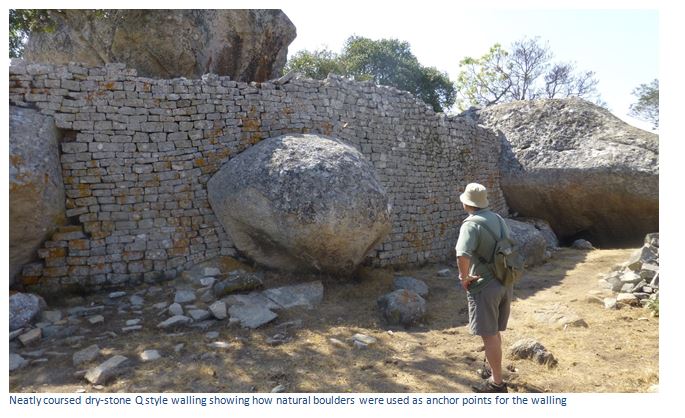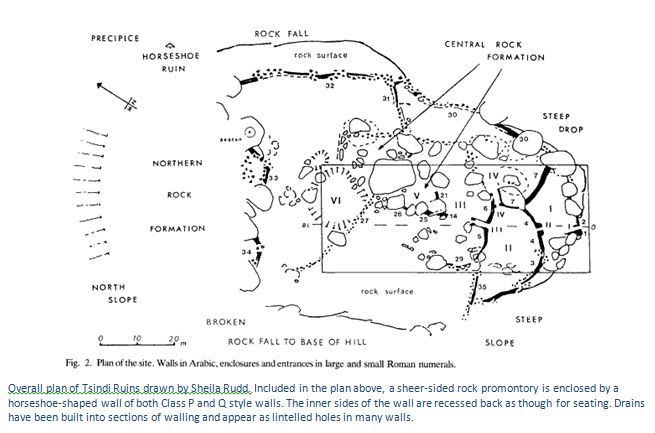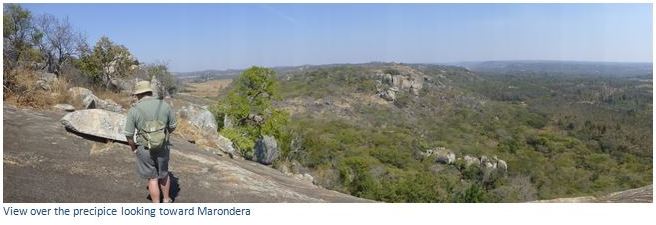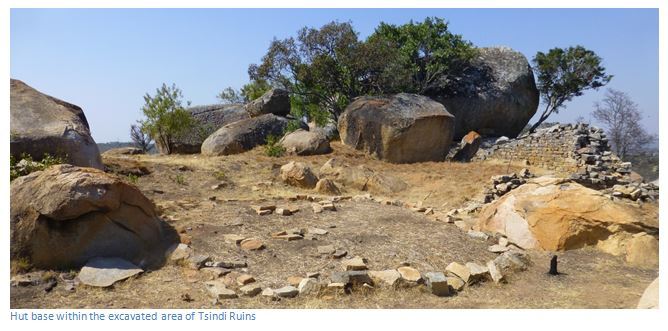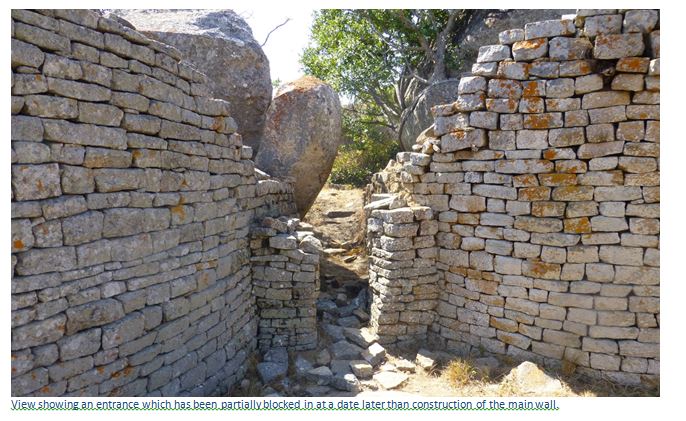Tsindi Ruins (formerly called Lekkerwater Ruins)
- From the archaeological excavations and the radio-carbon dates of charcoal remains it appears that the first walls of the settlement were built in the 13th century and were added to in the 15th century. These are of the same type as those found at Great Zimbabwe. During the 17th or 18th century large clay huts were built within the enclosure and it is believed they were used for religious purposes by spirit mediums.
- One of the many dry-stone monuments, or madzimbahwe found in Zimbabwe.
- Once this stone enclosure with its thatched huts was the elite residence of a local ruler and the probable site of a traditional religious centre housing a spirit medium.
- Easy Access from Harare on good tar road with fine views from the summit of the hill.
Take the Mutare Road from Harare, drive through Marondera. Continue along the A3 Mutare Road for 15.5 KM. Turn left into Theydon Road signposted Davis Granite and Bernard Mizeki 10 KM; 16.9 KM cross the railway line and turn right at the signpost Tsindi National Monument 11.5 KM. At 25.6 KM pass the Bernard Mizeki Shrine on your right. The road changes from narrow tar to good gravel at this point. At 27.6 KM turn right at the sign Tsindi National Monument 800 metres, 28.4 KM keep left uphill, 28.8 KM reach the Site Museum and car park.
GPS reference: 18⁰05′50.60″E 31⁰42′25.42″E
Peter Garlake reminds us that that stone enclosures, such as we see at Tsindi Hill, served a clearly domestic purpose in screening and sheltering groups of clay-walled thatched huts which were the living quarters of a small elite, probably a ruling group. The stone walls should be taken as a symbol of authority, or prestige. He goes on to say that the ruins of 150 similar enclosures can be found on the granite highveld of Zimbabwe, but that scientific archaeological excavations were limited in 1970 to eight sites, in which Tsindi is included.
Tsindi Ruins was excavated by Sheila Rudd in 1963 – 1966; who recorded her finds in Excavations at Lekkerwater Ruins, Tsindi Hill, Theydon, Zimbabwe on behalf of the historical Monuments Commission and most of the detail of this article is from this source. The archaeological evidence identified three stages of occupation at the site each identified by different building methods and pottery types. They were:
Late Early Iron Age Settlements – these consisted of pole and dhaka huts on dhaka floors linked with early P-type walling. Class P walls are built of untrimmed stone, uncoursed and generally free-standing comprise the outer walls and internal walls numbered 1-33 in the plan of the site below.
Later Iron Age settlements – these had Q-type walls and huts with massive dhaka kerbs. Class Q walls are made of trimmed and coursed stones similar to those buildings of Great Zimbabwe and are numbered 34-35 in the plan of the site.
Late Iron Age religious settlement – the huts have internally decorated dhaka structures. After their destruction in the nineteenth century, the site was abandoned.
The Tsindi Ruins are southeast of Harare not far from Marondera on a prominent granite hill, the ruins being on the southern side of the hill and are about 150 metres above the valley floor of the Nyakambiri River and has good views in all directions. The ruins cover about 2 hectares and the walls are built into the natural rocks on site.
This site was occupied by the Nhowe people for about 250 years under Chiefs who bear the dynastic name of Mangwende and were allocated land by the Rozvi dynasty who were the overlords. In the 1830’s during the Mfecane, the Nguni invasions took place and the Rozvi were defeated. Who caused the violent destruction of Tsindi as a religious centre is not known; thereafter it was used as a refuge and cattle kraal. Local oral history collected after the First Chimurenga (Mashona Uprising) of 1896-7 makes no mention of whether the Tsindi Ruins were inhabited at this time.
Carl Mauch was the first European to see Tsindi Ruins in 1872 when he writes in his journal that he saw: “an isolated low hill on which there are properly built walls…all give the name of zimbabye to these ruins” and continues: “and around a mountain, about 400 feet high, to Sakatoko’s village, which has been built below the vertical precipice on the northern side of the mountain, but still halfway up the slope.”
The excavations revealed much pottery including stamped ware and decorated pottery from the 13th to 19th century; pottery objects included parts of female and animal figurines and dagga pipe bowls and spindle whorls made of clay. A number of iron arrowheads and blades were recovered, iron anklets and bangles and pieces of slag indicate smelting was taking place, although no furnace site was located. Stone artefacts included a pendant, quartz polishing stones, a granite hammer and grinding stones. Miscellaneous finds included shells. Some glass and metal beads were recovered and gold and copper rings.
The presence of a deep cave set amongst the walls would have been the focal point in any traditional religious centre. One of the huts would have been a bareya…a religious house which would have been occupied by a spirit medium. Inside a platform would hold offerings to the spirits and posts would be hung with the spirit medium’s regalia. This hut appeared to be divided and it was suggested by local informants that this might be an ante-room with a step for persons to kneel in the presence of the spirit medium. In another hut sacrifices of young cattle or goats would take place with pots of beer and ritual snuff placed on raised platforms.
Roger Summers observes that this is one of the few sites in Zimbabwe where the thick dhaka moulding was skilfully preserved due to the careful archaeological work carried out by Sheila Rudd. These has been recorded within the huts of other Zimbabwe enclosures, but usually destroyed during excavation.
Acknowledgements
S. Rudd. Excavations at Lekkerwater Ruins, Tsindi Hill, Theydon, Zimbabwe. The South African Archaeological Bulletin 30. 83-105. 1984
P.S. Garlake. Rhodesia Ruins – A Preliminary Assessment of their Styles and Chronology. The Journal of African History Vol. 11 No. 4, 1970 P495-513
R. Summers. Ancient Ruins and Vanished Civilisations of Southern Africa. T.V. Bulpin 1971

